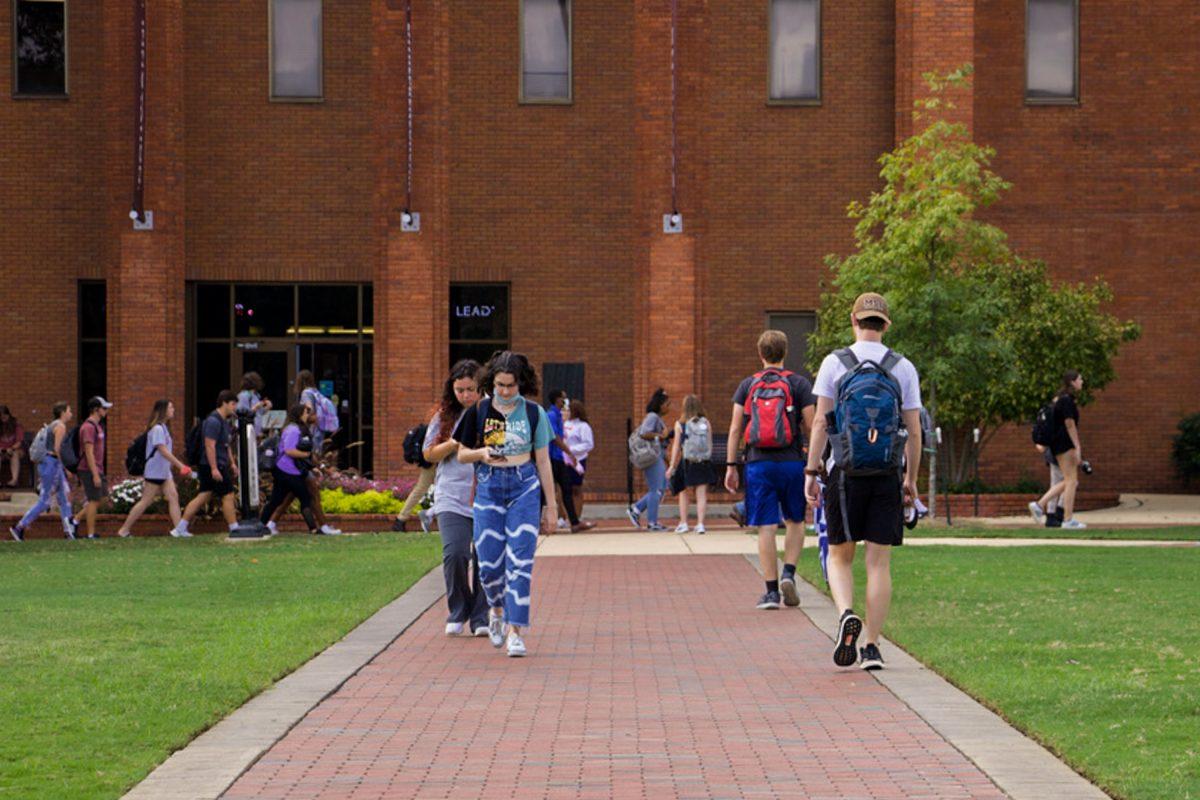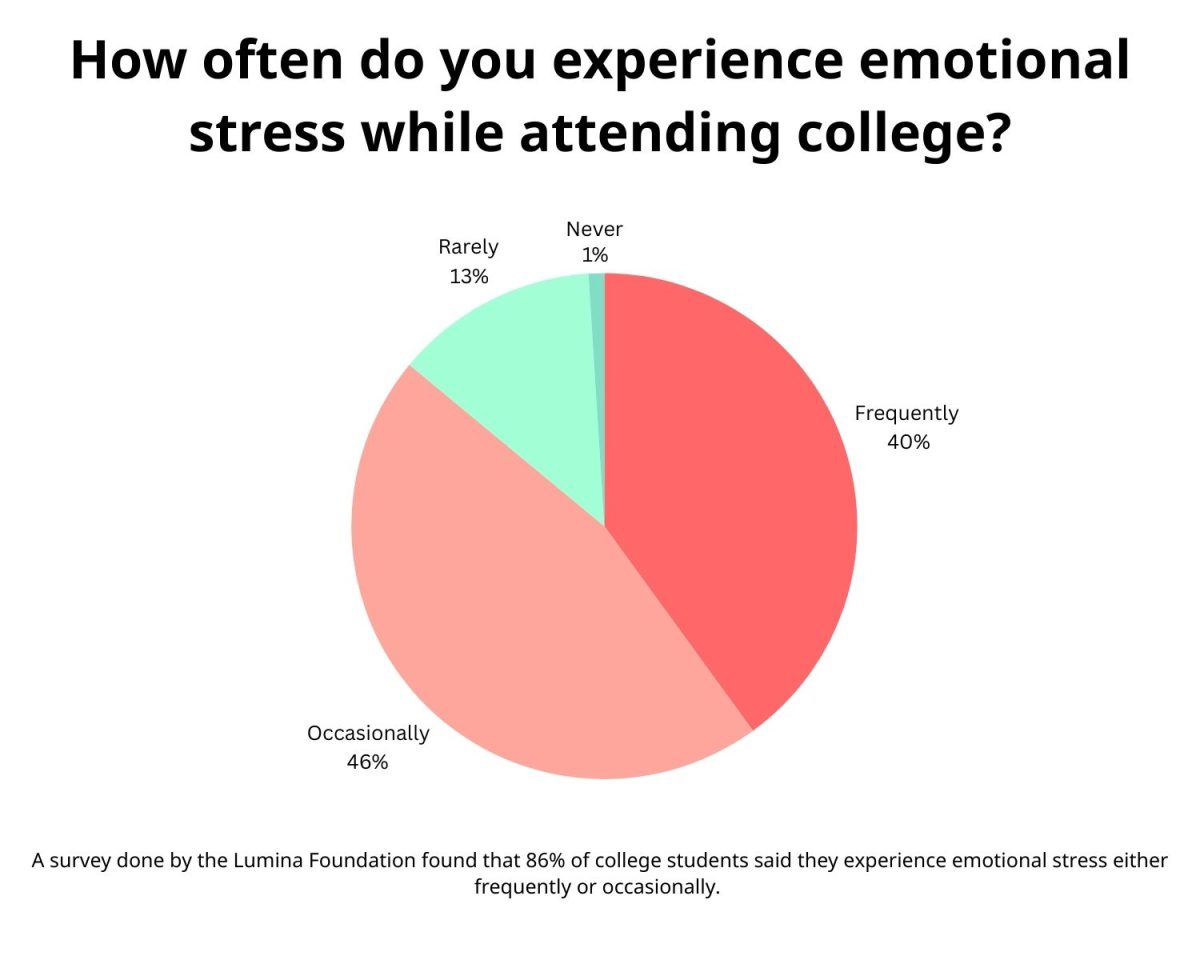Step one is identifying our enemies: heat and crowds. These are the inevitable inconveniences faced by anyone who walks though the Drill Field. Between classes, the long path stretching from the Colvard Student Union to Allen Hall starts looking more like a concert queue than a sidewalk: a line, four people across and moving at a fraction of the speed of their normal pace. The Mississippi sun and humidity are constant and unyielding until mid-October, upon which they trade for rain until spring. Between the walking traffic and the heat—and to a lesser extent rain—it seems like I always show up to class feeling wet, either with sweat or with rain. I am tired of feeling wet and I imagine many other students are as well. The experience of commuting between classes could become comfortable with some pedestrian-friendly revisions of the layout of the Drill Field.
Our first enemy is heat. Looking out over the Drill Field from the top floor of the library reveals students clumping around the Union like bees around a hive. Yes, the Union is probably the only common denominator between students. There are tables, always full, so it follows there would be more people there. The trees surrounding the area are just as important as the tables or the proximity to Chick-fil-A. Shade is essential to a pedestrian space.
According to the Environmental Protection Agency, tree coverage can lower the surface temperature of a given object by anywhere from 20 to 45 degrees Fahrenheit. Our quad is lacking in greenery. We are exposed to direct sunlight just about every time we are on the Drill Field. Currently, there are a dozen or so saplings growing on the far corners of the Drill Field. This is a good start but imagine the profile of the Drill Field if it were shaded amply. Ample tree coverage would cool the area, making it more comfortable for commuters walking through, and open up the possibility of more public sitting spaces for picnickers, study circles and people lounging outside.
Our second enemy is crowds. The next step to transforming the Drill Field is reconsidering and expanding on the current brick road layout. The paths are rigid, lacking in an understanding of the movement of students. Two paths, the long ones running on the edges of the Drill Field from Lee Hall to the Swalm Chemcial Engineering Building, tend to be marginally more packed than the interior paths. Part of this is shade, but partially it is a cumbersome choice in paths. If you are trying to get from one corner of the Drill Field to the other, it is far more convenient to walk the duration of the long path to the area in front of Allen then turn towards the library than it is to attempt the weird halfway diagonal that stops at the flagpole for some reason.
I grew up in a pedestrian-heavy city where I could walk anywhere. Grassy areas within parks laid between residential neighborhoods and business hubs were constantly trampled over by commuters. The paths which they carve in the grass blazed by efficiency are called desire paths. Humans carve these paths without an eye to infrastructure and can be useful in seeing patterns. Finland records data about the desire paths carved out of fresh snow to predict where to expand business.
We have relatively few here on campus. There is one running from commuter north toward the Old Main Academic Center. There is another behind the post office. So, if the brick paths are so bad, why are there no desire paths on the Drill Field, no trampled lines of grass? Simply, it is too muddy. Both of the well-trodden desire paths on campus are on relatively steep hills. After any given Mississippi storm, the water runs right off, leaving the ground solid for pedestrians. The first time I confidently strode into the Drill Field’s grass on my first day as a student I sunk inches into the mud. The level ground collects water, leaving desire paths as a project only for the late left with no other options.
If paths were expanded, laid out logically with attention to which buildings bring the largest crowds in the minutes before and after a standard class time starts, the comfort and maneuverability of campus would be quickly and observably better. According to Kurt Kohlstedt with 99% Invisible, similar strategies have been utilized at Virginia Tech and University of California Berkeley, who used pedestrian traffic data to predict a myriad of helpful paths to traverse their campus.
Our campus is a microcosm of a city. It has grocery stores, independent businesses, residences and even a church. It is time we start planning it the way it is intended to be, like a city. By providing better shade through the entire Drill Field and by expanding and diversifying path options, it could become the campus hub it was destined to be. It is not an investment in something immediate and pressing, like parking or residency. It is an investment in the aesthetic of our campus, and, more importantly, in the overall quality of life for the thousands of students at MSU, and the thousands who will come over the decades.








